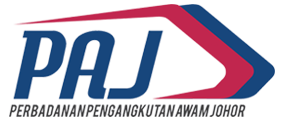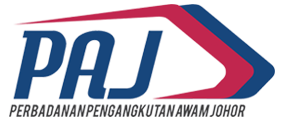
29 June 2011
Perbadanan Pengangkutan Awam Iskandar Malaysia Sdn. Bhd
(PAIM)
Perbadanan Pengangkutan Awam Iskandar Malaysia Sdn. Bhd
(PAIM) officially registered with SSM as a private company and is a company limited by shares.
Objective PAIM
- To assist the state authorities and the relevant authorities in the Iskandar Development Region in the formulation of strategies and initiatives for the implementation of a comprehensive public transport system and the improvement of urban linkages.
- Subject to the provisions of any law relating to the road, to establish obtain, maintain and run inside or outside of public transport services IRDA.
- To enter into any local authority or any person to secure or extend the course of any work or tasks that it is empowered to conduct and to provide for the establishment, maintenance, regulation and control of public transport services and set the fare charged in or IRDA.
06 February 2013
MMK agreed to hold Public Transport Week 2013 (18 – 24 March 2013) is located around Iskandar Malaysia.
26 March 2014
MMK agreed allocation of RM1.5 million for the PAIM in 2014.
MMK agreed projects conducted by PAIM is under the provisions of the Public Transport Infrastructure Corporation.
MMK Chief Executive agreed PAIM granted approval to change the title of the project as well as a price ceiling based on the provisions laid down in accordance with the current requirements.
MMK Board of Directors agreed to PAIM authorized to approve projects and programs that use public transport from the MB Office.
MMK does not agree to change name from PAIM to PAJ.
MMK agreed the Public Transport Unit established in each local authority in each district.
MMK agreed PAIM is an intermediary body with SPAD in matters related to public transport services and IM state.
Functions of Public Transport is :-
To coordinate the provision and improvement of infrastructure and public transport services.
03 December 2014
Meetings of the Board of Directors of PAIM suggest the best structure is incorporated under the name of the Government of Johor Public Transport Corporation (PAJ).
MMK agreed to extend the functionality of AIM and take responsibility for the role and activities of designing, implementing and regulating infrastructure and public transport services in Johor.
25 June 2015
Registration name change Pengangkutan Awam Iskandar Malaysia (PAIM) to Perbadanan Pengangkutan Awam JohorSdn. Bhd. (PAJ) in SSM.
Establishment PAJ under the Government of the visits can ensure the implementation of policies and strategies designed to strengthen public transport services in Johor.
About Perbadanan Pengangkutan Awam Johor (PAJ)
Public Transport Corporation of Johor (PAJ) Sdn. Bhd. is a private company wholly owned by the Johor State Secretary Incorporation under the Companies Act 1965 in providing special services relating to public transport in the state of Johor
PAJ, previously known as the Iskandar Malaysia Public Transport Corporation (PAIM), is now responsible for planning and coordinating infrastructure, services and development of public transport throughout the state. This mandate was granted by YAB Dato ‘Mohamed Khaled bin Nordin, the Chief Minister of Johor, based on the outstanding performance of PAIM Corporation for the past three (3) years.
The PAIM Corporation was formerly more focused on the planning and supervision of public transport development within the Malaysian Iskandar area. However, this fungus has been expanded to the entire state of Johor and in line with this, PAIM’s re-branding to PAJ has been officially used since June 2015
PAJ Vision
Public transport as the preferred mode in the state of Johor by the year 2045.
PAJ Mission
- Being a major reference agencies in terms of public transport in the state of Johor and national levels.
- Being the lead agency for managing and developing the public transport system in the trust in the state.
- Being a facilitator and coordinator of the agencies that are effective in addressing issues related to public transport.
PAJ Objective
- To ensure that all government policies regarding the public transport of the state government are implemented in accordance with the standards set. This includes :-
Operating Performance Standards.
Service Standards Performance
Branding Standards Initiative
To improve infrastructure and oversee the operation and maintenance of public transport services along with agencies, local authorities and operators of service operators
To strengthen the provision of infrastructure and public transport services in line with the Johor Public Transport Master Plan (PIPAJ)
To play an important role and be proactive in the provision and monitoring of performance and the quality of public transport services.
To become a One-stop Center during the evaluation and monitoring of optimum development of land use and taking into account the provision of infrastructure and public transport services in Johor.
Providing consultation and consultancy services to all Public Transport Unit established in all districts of the state’s local authority
25 June 2015
TransJohor brand brand will be used as public transport services outside the district Iskandar Malaysia.
13 October 2015

Logo PAJ approval of the Minister of Johor.
21 October 2015
MMK agreed to the proposal of transfer of heavy vehicles from the Causeway to the Second Link.(SUKJ.UPENJ.9-4 / 4 / 13Jld.22)
It is used as one of the ‘Terms of Reference’ (TOR) in Public Transport Master Plan Study Johor (PIPA)
Purpose of the study PIPA
1) To be a reference point in planning public transport to the Johor State Government and relevant agencies, especially in the planning of public transport services and infrastructure.
2) To ensure a comprehensive public transport plan in line with the Johor State Public Transport Commission (SPAD), which reached 80% coverage of public transport.
3) To plan the distribution of balanced development throughout the state.
4) To identify public transport services and facilities to be provided for each region based on the current and future demands including construction schedule, cost, implementing agencies, approach and methodology of work.

